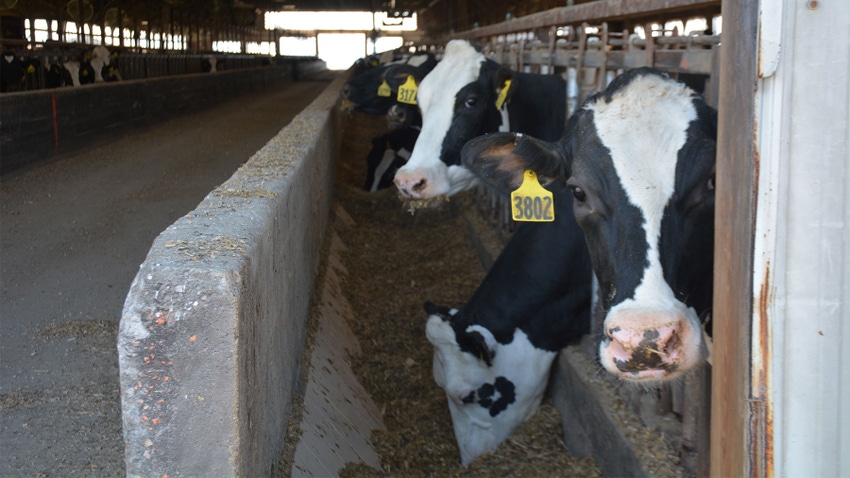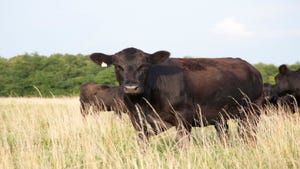
Over 30 years, dairy farms in New York state have gotten bigger, and cows produce much more milk than ever before. But how much?
The 30-year report of the Dairy Farm Business Summary has some insight.
Produced by Cornell Pro-Dairy, the summary provides a glimpse into the financial state of dairy farms in the Empire State from actual farm data.
According to its website, the Dairy Farm Business Summary and Analysis project is one of the longest applied research efforts within Cornell’s College of Agriculture and Life Sciences. It started in 1956 as a way for dairy educators to work with dairy farmers to analyze financial and business performance over time.
“The goal is to foster better management of the participating farms through modern analysis of their financial data and education around decision-making, and use of that data to help better meet the family's goals," says Jason Karszes, senior Extension associate of animal science with Cornell Pro-Dairy.
In 2002, the business summary was converted to a web-based system with farm data from as far back as 1993 available. Other similar dairy reports are done by universities in Michigan, Wisconsin and Minnesota.
Here are some highlights from the 30-year report:
133 dairy farms participated in the 2022 report, down from 343 in 1993.
The average number of cows per farm in 2022 was 1,233 head, up from 130 in ’93.
The average herd production was 27,222 pounds in 2022, up from 18,858 pounds in ’93.
The capital investment per cow was $13,182 in 2022, up from $6,462 in ’93. This includes all facilities, machinery, equipment and more to run a dairy farm.
The debt per cow was $4,045 in 2022, up from $2,254 in ’93.

Karszes says the report also paints a picture of how volatile dairy markets are and, as a result, how it can affect a farmer’s bottom line. Look at this graph that shows variability in milk price and how that can affect return on investment:

“Certainly, the graph shows increasing variability in earnings, and how do we manage for years instead of just managing for one year, with the variation that occurs in pricing, costs and growing conditions?” Karszes says.
Debt per cow almost doubled, as did assets per cow, so the percentage equity stayed similar. The average dairy farm net worth in 1993 was $553,370. In 2022, average net worth was $12.2 million.
Debt-to-asset ratio, a key indicator of how much debt a farm owes, actually went down from 0.35 in 1993 to 0.29 last year.
The most recent Dairy Farm Business Summary for 2022 was released in August. Here are some key highlights:
Herd size and total milk production increased 3%.
Hired labor costs per worker equivalent increased 6.4%.
Milk sold per worker increased 0.6%.
Total farm operating costs increased 18%.
Total cost of producing milk increased 19%.
Gross milk price increased by 37%.
And the rate of return on all capital without appreciation was equal to 11.6%.
“It’s about how do we manage variability,” Karszes says. “Again, here in the Northeast with the milk market limitations and labor costs, where do we reinvest, how do we reinvest, what’s next for the farm if limited on labor and what milk can be produced?”
How data are compiled
Farms participate usually through an Extension educator. Karszes says the first two years of a farmer participating in the program consists of farm visits and virtual meetings to teach producers how to get their data into the system. The goal over time, he says, is for producers to enter their own data into the program and to increase the amount of data they choose to share.
A secondary benefit, he says, is that the data can be used for teaching, research and Extension purposes.
Karszes says 21 farms have participated in the summary every year since 1993. Data before 1993 is hard to come by, he says, because of offices being closed or reorganized. But one of those 21 farms has records going back to 1961.
“What’s unique about those 21 farms is they haven’t missed a year,” Karszes says. “There are another 17 farms that were doing the summary in 1993 and also did it in 2022. They just might have missed a year or two, or five, in between.”
With the decrease in county-based farm management Extension staff across New York, Karszes says fewer people work on the summary each year, which leads to fewer new farmers being recruited into the program.
Long-term vs short-term thinking
By providing data about their own operation, Karszes says dairy producers can analyze trends to see if what they are doing is working or if changes need to be made.
“Where we have financial analysis over a number of years, you can see if your profit and net worth are increasing or decreasing, if your rate of return is staying higher than level to borrow money,” he says.
“And the individual year you might look good, but it's about multiple years and looking at that,” he adds. “The second area is, where are my different measurements going? As you make changes, are those measurements changing in the way you expected them to?”
About the Author(s)
You May Also Like






